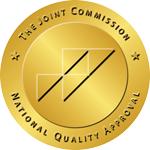Successful prevention and treatment of alcohol and substance use disorders (AUD/SUD) often demands unraveling a tricky knot: co-occurrence with mental health disorders such as co-occurring anxiety disorder. Many anxiety disorders first appear in youth, pre-adolescence, or early adolescence, before exposure to alcohol or drugs that lead to SUDs.
Not all anxiety disorders appear before addiction disorders, though. Specific subsets of anxiety disorders, such as generalized anxiety disorder or panic disorder (GAD or PD) often emerge after an individual develops an AUD or SUD. Recent studies into the interaction between anxiety disorders and addiction show how each disorder can intensify the other.
These studies also recommend ways providers might fine-tune intervention, screening, and treatment strategies to serve people diagnosed with co-occurring anxiety and addiction disorders.
Rates of Co-Occurrence of Anxiety and Addiction
When anxiety and addiction co-occur, one common outcome is that the life-interrupting aspects of the disorders reinforce one another. In other words, each disorder exacerbates the other. The symptoms of an anxiety disorder lead to self-medication with alcohol or drugs in order temporarily ameliorate uncomfortable symptoms. Over time, tolerance and dependence may develop. Once that happens, the path to misuse and addiction becomes more likely.
Here are the latest statistics on alcohol use disorder (AUD) or substance use disorder (SUD), collectively known as alcohol or drug addiction, and anxiety disorders among adults in the U.S.
SUD, AUD, and Co-Occurring Anxiety Disorder
- Substance Use Disorder:
- 12 and older: 6.6% or 18.4 million people
- 18-25: 14.6% or 4.9 million people
- 26+: 5.6% or 12.3 million people
- Alcohol Use Disorder:
- 12 and older: 10.2% or 28.3 million people
- 18-25: 15.6% or 5.2 million people
- 26+: 10.3% or 22.4 million people
- Anxiety Disorder:
- 18+: 18.1% or 40 million people
- Co-Occurring Anxiety Disorder and AUD/SUD:
- Among people with anxiety disorder: 15% report AUD/SUD
- Among people with AUD/SUD: 18% report anxiety disorder
Given the significant prevalence of co-occurring AUD/SUD and anxiety, it’s important to understand how addiction and anxiety are related. We’ll now offer a general discussion of anxiety and anxiety disorders.
Anxiety Disorders: Where Do They Come From?
A diagnosis of an anxiety disorder very generally means that an individual is experiencing excessive fear and/or anxiety in relation to daily life. Both anxiety and fear are useful emotions that regulate successful interactions with the world by indicating danger and potential harm. Fear tends to be about a present, specific object or event, while anxiety is triggered by a future event that may or may not be specific.
For example, seeing a snake on a path in the woods may evoke an instant reaction: fear. In response, an individual takes action to avoid the snake. That’s the simple function of fear, in most cases. It enhances safety, and therefore, survival.
On the other hand, anxiety in advance of an important meeting with a boss for a work performance review might also evoke an instant, fear-type reaction that most of us would identify as anxiety. In this case, the anxiety/fear may cause an individual to tighten up their work habits, increase performance, and prepare thoroughly for the review.
In both cases, the anxiety and fear are productive.
That’s helpful – but what’s the relationship between anxiety and addiction?
Which Comes First? Anxiety or Addiction?
The subtypes of anxiety disorders that researchers have been able to identify as developing before or after the onset of addiction are social phobia, generalized anxiety disorder, panic disorder, and agoraphobia.
Here’s when they most commonly develop, in relation to addiction:
- Social phobia is most likely to develop before the onset of alcohol use disorder (AUD)/substance use disorder (SUD)
- Generalized anxiety disorder is more clearly likely to develop after the onset of AUD/SUD.
- Panic disorder and agoraphobia most often develop before the onset of AUD/SUD, but in some cases develop after AUD/SUD
The earlier onset of social phobia, now known as social anxiety disorder, may be explained by the fact that it typically emerges in childhood and early adolescence, before most people experiment with alcohol or drugs. Here are the symptoms of social phobia/social anxiety disorder:
- Heightened fear of interacting or talking with strangers
- Heightened fear that others judge one negatively
- Excessive worry over embarrassment or humiliation in social/public situations
- Excessive fear that others will notice physical symptoms (sweating, shaky voice, trembling, etc.)
The symptoms of generalized anxiety disorder include physical symptoms that overlap with the symptoms of withdrawal. This explains why this diagnosis is often made after an individual develops AUD/SUD. These physical symptoms include:
- Difficulty sleeping
- Muscle tension
- Easily startled
- Nausea, diarrhea, or irritable bowel syndrome
The fact of co-occurrence and the overlap between the symptoms of anxiety, addiction, and withdrawal often complicate an accurate diagnosis of both addiction and anxiety. That’s why it’s important for clinicians to offer a complete assessment of any individual with addiction: there may also be anxiety present.
Insightful Intervention and Innovative Treatment
Clinicians working with individuals with AUD/SUD may need to enhance anxiety screening to best tailor treatment plans. Most initial assessments for addiction do attempt to assess mental health disorders. With that said, the high prevalence of co-occurring anxiety disorder and AUD/SUD makes additional assessment for anxiety logical.
For example, if a given AUD/SUD appears alongside a panic disorder, clinicians may need to consider different pharmaceutical treatments in addressing both disorders. While the panic disorder may have preceded the addiction, earlier treatment of the panic disorder with benzodiazepines may have accelerated the development of the AUD/SUD.
In addition, the people who create public health and addiction awareness campaigns designed to prevent or reduce AUD/SUD among certain populations should consider special features among these populations that make individuals prone.
For example, campaigns that target adult professionals in high-stress jobs can clearly elucidate the problematic interaction of medications such as benzodiazepines – often prescribed to manage anxiety – and alcohol.
An accurate diagnosis of both the addiction and the anxiety is crucial for a full and efficient recovery. When one disorder is treated and the other is ignored, both disorders get worse: that’s a fact backed up by decades of research.
However, when co-occurring disorders are treated simultaneously with a holistic, integrated treatment model, like at top treatment centers in Ohio, such as The Ridge, the likelihood of full recovery from both disorders improves dramatically. The Ridge also offers detox programs and an inpatient rehab facility to help in complete recovery.


